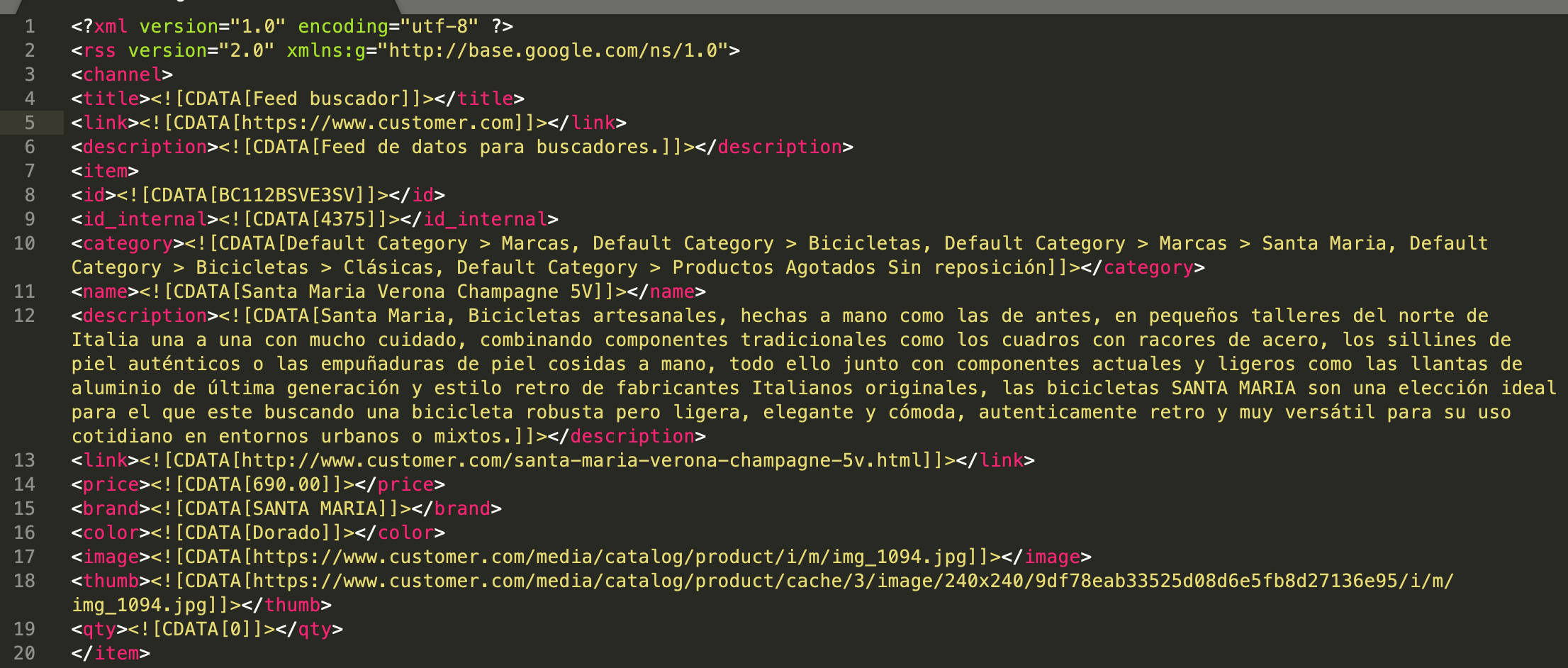EN - Best Practices and Recommendations for Structuring your Catalogue (Feed)
Your catalogue is very important to us and we want to make the most of it!
Before sending a catalogue, with the data of all the products and associated behaviour of these, a series of steps should be important to take into account so that Empathy can recognize it.
Format
First, the feed files must be sent in XML/Json format or Zip containing them.
Encoding of the file should be “utf-8”
Feed types
There can be two types:
- Catalog (complete feed):
- One with all languages → must have a field language inside
- One per language
- Deltas: types:
- Update data (replace invalid data by new ones)
- Delete data.
- Insert data.
Required fields:
There are some minimum required fields needed to be valid:
- ID: identifier of each product
- Must be unique
- Name:
- String of the name of a product (should have sense)
- Image:
- Check url (should not be broken or partial)
- Sizes of them
- Product url:
- Check url (should not be broken or partial)
- Price:
- Number format
- Category:
- Must follow a hierarchy (see example below)
- Language:
- Can be:
- one feed for one language
- one feed with all the languages: the content MUST have a field language
- Can be:
NOTE: None of them should be empty.
Desired fields:
And some desired fields would be also great to be included:
- Category id:
- A unique value for the category
- Description:
- Must be specific for the product
- Sale price:
- Number format
- Color:
- Css value format
- Common name (blue instead of aquamarina)
- Aditional image
- Brand
Let us see an example of this in xml:
When is a feed not valid?
- Incorrect format: tags to close, missing commas....
- Incorrect codification: of characters inside feeds
If these instructions are followed it will be much easier to start working with a proper feed ![]()
